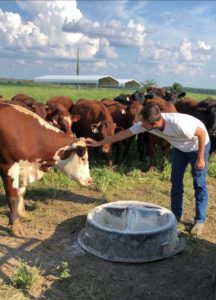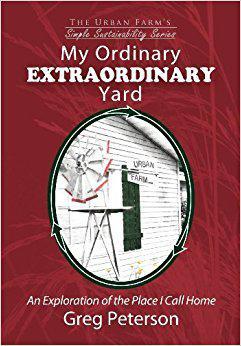Investing in our Food System
by Guest blogger: Chris Rawley
of Harvest Returns
Listen to his podcast HERE
How I Learned to Love Farming & Help Producers
Like many kids from my generation, I grew up in the suburbs and ate frozen dinners in front of a boxy, wooden TV with a handful of channels. I didn’t know what was in my food, how it was produced, where it was grown, or who produced it. Then after college, I joined the Navy, and as they used to say in the recruiting commercials, I got to see the world. I have traveled to more than 50 countries — some of them war torn or desperately poor.
Whether in destitute places like Iraq, Afghanistan, Somalia, and Mauritania, or wealthy countries such as those in Western Europe, the one unifying factor I noticed was that agriculture was an essential part of peoples’ lives. Though some of these regions lacked food security, I usually didn’t have to travel very far to see a plot of maize or a few scraggly goats behind a hut. People are connected to their food system where there is scarcity because they have to be.
The American food system
In the United States, we take the abundance of food and our multitude of choices for granted, but we really should not. The good news is that more and more Americans today view their food quite differently than I did as a kid growing up in the ‘70s and ‘80s. People want to understand the ingredients they are eating and want food to be fresh, nutritious, and locally-produced. We want organic produce or meat from humanely-raised livestock. We care about the environmental impact that results from food production.
Our evolving and more specialized diets require more specialized production methods. Often these production methods, such as urban or indoor farming, require significant capital to get started. Americans now have the opportunity to use our wealth to positively transform the food system by investing in sustainable agriculture production.

Cows on a farm that was invested in through Harvest Returns.
Putting your money where your mouth is… going to need it
When deciding where to put your dollars to work in a farm investment, there are a few key items to consider. The first question to ask yourself is why do I want to invest in a farm? Do you want to support regenerative agriculture and improve the food system? Are you looking for diversified returns for your retirement portfolio? Do you simply want to help a farmer realize his or her dream of expanding their operation?
You are entrusting that farmer with your hard-earned money and expecting they will produce the investment returns they have promised. You should also have confidence in the products they are producing and their production methods. The best way to build this confidence is to educate yourself by researching the crop, the producer, and underlying market conditions impacting that commodity. Farm investments can be extremely rewarding, both tangibly and intangibly, but should be done with careful consideration.
UrbanFarm.org/investinfoodsystem
About this author:
 Chris’ farming story began when he decided to invest in a farm and found out it took a lot of money, time, and know how — three things he didn’t have. So he decided to start a company that would enable people like him to invest in sustainable farms, and thus Harvest Returns was born. Harvest Returns provides an alternative source of funding for specialty farm producers.
Chris’ farming story began when he decided to invest in a farm and found out it took a lot of money, time, and know how — three things he didn’t have. So he decided to start a company that would enable people like him to invest in sustainable farms, and thus Harvest Returns was born. Harvest Returns provides an alternative source of funding for specialty farm producers.
How to reach Chris
Website: HarvestReturns.com
Twitter: @HarvestReturns
LinkedIn: Harvest Returns


